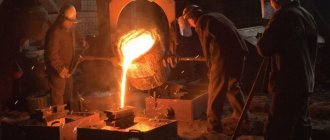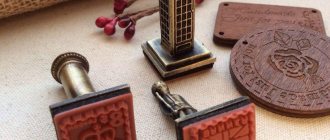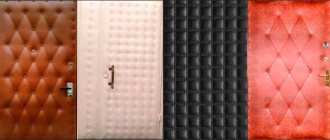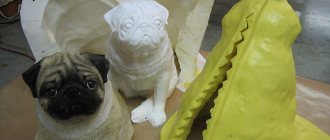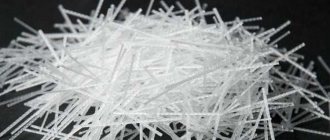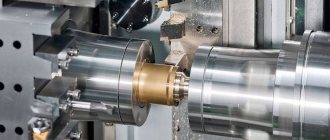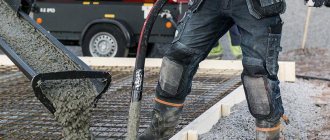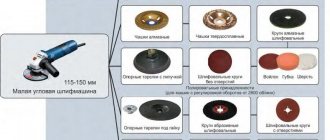The essence and possibilities of using this technology
Stamped concrete is ordinary concrete, onto the surface of which decorative embossing is applied using special stamps. The relief pattern can imitate any material: brick, paving stones, boards, animal skins, weathered stone, cracked earth. You can choose stamps with leaf patterns, dinosaur footprints, and animal figures.
Stamped concrete is especially popular when decorating terraces, patios, areas near swimming pools, garden paths, sidewalks, gazebos, floors in restaurants and exhibition halls. This technology becomes indispensable for complex restoration work. For example, when it is necessary to recreate a destroyed part of an ancient pavement. It is often not possible to find exactly the same materials that have aged naturally. And with the help of stamped concrete technology, exact copies of existing old brick or half-erased stone can be easily created.
Variety of stamps for printed concrete
The first stamps for stamped concrete were made of cast aluminum and were massive molds equipped with handles. Such matrices are well suited for simulating ordinary brick or stone patterns. But they are unable to copy complex textures. Modern polyurethane stamps are a completely different matter. They are cast on real materials, the texture of which must be copied. As a result, incredibly authentic textural effects can be achieved using polyurethane molds.
Ready-made stamps can be purchased at many construction stores or centers. When choosing, you should pay attention to the degree of rigidity of the shape. The denser the stamp, the easier it is to create a clearly visible design. Forms that are too soft and pliable are more difficult to work with and require more effort during the printing process.
Size: (5cm*118cm)
Price: 2500 rub.
Size: (7cm*118cm)
Price: 2500 rub.
Size: (12cm*112cm)
Price: 4000 rub.
More details: Stamp INSERT FOR STAIRS AND WINDOW SILLS
- Seal
Stamp for decorative printed concrete “INSERT FOR STEP No. 1”
Size: (120cm*15cm)
Price: 3500 rub.
More details: Stamp INSERT FOR STAGE No. 1
- Seal
Stamp for decorative printed concrete “INSERT FOR STEP No. 2”
Size: (126cm*17cm)
Price: 3500 rub.
More details: Stamp INSERT FOR STAGE No. 2
- Seal
Stamp for decorative printed concrete “DOUBLE BOARD”
Size: (120cm*50cm)
Price: 7500 rub.
More details: Stamp DOUBLE BOARD
- Seal
Stamp for decorative printed concrete “SINGLE BOARD”
Size: (120cm*30cm)
Price: 6000 rub.
More details: Stamp SINGLE BOARD
- Seal
Stamp for decorative printed concrete “European fan”
Size: (117cm*66cm)
Price: 7500 rub.
Read more: Stamp EUROPEAN FAN
- Seal
Stamp for decorative printed concrete “HERringbone”
Size: (130cm*60cm)
Price: 6500 rub.
Read more: Herringbone stamp
- Seal
Stamp for decorative printed concrete “CALIFORNIA BINDING”
Size: (60cm*60cm)
Price: 5000 rub.
More details: CALIFORNIA BINDING stamp
- Seal
Stamp for decorative printed concrete “STONE SKIN”
Size: (53cm*37cm)
Price: 2000 rub.
Read more: Stamp STONE SKIN
- Seal
Stamp for decorative printed concrete “TREE BARK”
Size: (32 cm * 18 cm)
Price: 1500 rub.
Read more: Stamp TREE BARK
- Seal
Stamp for decorative printed concrete “BASKET WEAVING”
Size: (60cm*60cm)
Price: 5000 rub.
Read more: Stamp BASKET WEAVING
- Seal
Stamp for decorative printed concrete “LISBON GRANITE”
Size: (100cm*50cm)
Price: 6500 rub.
Read more: LISBON GRANITE stamp
- Seal
Stamp for decorative printed concrete “LONDON CABLE”
Size: (75cm*43cm)
Price: 6500 rub.
Read more: Stamp LONDON CABLE
- Seal
Stamp for decorative printed concrete “SMALL SLATE”
Size (61 cm * 61 cm)
Price: 6500 rub.
Read more: Stamp SMALL SHALE
- Seal
Stamp for decorative printed concrete “DECK BOARD”
Size (133 cm * 30 cm)
Price: 6500 rub.
Read more: Stamp DECK BOARD
- Seal
Stamp for decorative printed concrete “PLITNYAK”
Size (107 cm *65 cm)
Price: 9000 rub.
Read more: Stamp PLITNYAK
- Seal
Stamp for decorative printed concrete “Torn stone”
Size (71cm*71cm)
Price: 6500 rub.
Read more: Stamp TORN STONE
- Seal
Stamp for decorative printed concrete “RIVER COBBLE”
Size: (122cm*54cm)
Price: 7000 rub.
Read more: Stamp RIVER COBBLE
- Seal
Stamp for decorative printed concrete “SLATE”
Size: (91cm*91cm)
Price: 7500 rub.
Read more: Stamp SLATE
- Seal
Stamp for decorative printed concrete “OLD GRANITE”
Size: (147cm*147cm)
Price: 9000 rub.
Read more: Stamp OLD GRANITE
- Seal
Stamp for decorative printed concrete “WALL FORM for decorative plaster”
Size (70 cm *29 cm)
Price: 4000 rub.
More details: WALL FORM stamp for decorative plaster
- Seal
Stamp for decorative printed concrete “EGEO STONE”
Size: (122cm*54cm)
Price: 7500 rub.
Read more: Stamp EGEO STONE
- Site Map
© 2022 Decorative concrete factory
- home
- Tools
- Materials
- Acid dye
- Stamps
- Contacts
- Payment and delivery
- Video
- Technology
Self-production technology
The technology of stamped concrete is quite simple, but you should only take it on if you already have some skills in working with concrete. Otherwise, the result may not be what you expected. Problems may arise for the following reasons:
- concrete hardens quickly, after which the use of stamps does not produce clear embossing on the surface;
- To perform embossing using stamps, you need to apply physical force;
- errors in embossing a concrete surface are difficult to correct;
- stamped concrete technology requires the worker to be able to use special tools to form and smooth the surface.
Once you are confident that you can handle the potential problems, you can begin creating the concrete pad and performing the stamping work.
Step 1. Preparing the concrete site
The basis for stamping is a regular concrete platform with reinforcement, made of concrete grade M350 and higher.
Technology for creating such a platform:
- using pegs and a cord, mark the boundaries of the area where stamping will be carried out;
- remove the top layer of soil (depth 15-20 cm), compact the soil bottom;
- pour a crushed stone cushion (10-15 cm thick) onto the bottom of the excavation and tamp it down;
- formwork made of boards is installed along the border of the site;
- lay a reinforcing mesh in the formwork, raising it above the ground level by at least 3-5 cm (by placing stones and bricks under the mesh);
- concrete is mixed manually, using a concrete mixer, or ordered ready-made;
- concrete is poured into the formwork, a metal rule is used to obtain the required level of the site;
- compact the concrete with a vibrating screed;
- The top layer of concrete is smoothed with a trowel, achieving a smooth and uniform surface.
Step #2. Application of color hardener
A colored hardener is applied to still fresh concrete, which simultaneously colors the surface and increases its strength. A colored hardener is a powder that contains coloring pigments, a binder filler and ground particles of granite and quartz sand. Due to the dispersion of the mixture, its particles penetrate into the pores of concrete and fill them. The concrete surface becomes more dense and durable. At the same time, the particles give the concrete a lasting color (about 30 tones to choose from).
Work on applying a colored hardener begins after the initial setting of the concrete surface. You can focus on the moment when all the water that appears from the surface has evaporated.
Colored hardener powder is scattered over the concrete surface manually, from the center of the site to the edges. At the same time, they perform movements similar to throwing a bowling ball. Scoop up a portion of the powder, move your hand back and with a sharp movement throw the mixture forward from waist level. This principle of applying powder minimizes the number of particles flying through the air.
The first layer of hardener should be absorbed into the concrete, which takes 5-10 minutes. During this time, the surface of the concrete is smoothed by rubbing the dye into it using a magnesium smoother. Corners are also processed using corner smoothers to make them curved and neat.
Then a second layer of colored hardener is applied. It is necessary to paint the surface more evenly and compact it. The powder is applied in exactly the same way as in the first case. After application, the surface is leveled with a steel trowel.
Step #3. Application of the release agent
The release ink prevents the concrete from sticking to the dies during the printing process. In addition, it additionally colors the surface of the concrete, giving it subtle shades of color. The release agent is available in the form of a dry powder or liquid. Most often, powder is used, applying it to the surface of the concrete with a wide brush (brush).
The brush is immersed in a bucket with a separating component so that the bristles are evenly covered with powder. Then, holding the brush at waist level, throw your hand forward and “spray” the powder over the surface of the concrete.
After painting, the corners of the area are treated with textured sandpaper.
Step #4. Surface stamping
Before you start stamping, you need to make sure that the concrete has acquired the required degree of plasticity and has become similar in consistency to plasticine. If you start stamping too early, the concrete surface will not be able to support the weight of the workers and maintain the print lines. If you are late, you will have to put more effort into the stamps to print clearly. In addition, the texture of the stamps may not be imprinted at all on concrete that is too dense, especially at the end of the job.
To determine the degree of density, just press your finger on the concrete surface at several points on the site. If there are prints left with a depth of 4-6 mm, then stamping can begin. You can also check it another way: place a stamp on a concrete surface (at the edge of the site) and step on it. The stamp must support the weight of the worker, not sink into the concrete, and not slide across the surface.
If all tests pass successfully, you can begin stamping. The stamps are laid out on the concrete surface, one after another. Manufacturers often number the stamps (1, 2, 3... or A, B, C...) to indicate the desired sequence of their placement in the printed design.
To imprint the texture of the stamps into the concrete, you can often simply step on them. Sometimes light hand tampers are used for this.
After the prints are made, the concrete surface is left to cure for 12-24 hours.
Step #5. Elimination of defects
On the concrete surface, where the dies meet, a slight displacement of the cement mortar often occurs. Sometimes, due to insufficient compaction, the seams of the printed pattern may appear blurry and indistinct. To correct surface defects, a hand roller is used along the seams and joints, and uneven surfaces are smoothed out with textured sandpaper.
Step #6. Cutting shrink joints
Several cut seams in the slab provide stress relief and prevent cracks. Such joints can be made in still fresh concrete using a special cutter. Or cut the seams with a grinder after the concrete has dried.
Step #7. Surface washing
The next day, wash the surface. Use a hose to wash off excess release agent. Afterwards, an acid wash (with hydrochloric acid) is performed to obtain the desired effect of a combination of two colors on the surface. During this process, the pores of the concrete also open, which promotes better interaction of its surface with the sealant.
Step #8. Applying sealant
The next day, a sealant varnish is applied to the concrete. It performs a number of functions:
- protects the surface from abrasion and wear, as well as from the penetration of oils and chemicals;
- gives the surface a shine of varying saturation (from barely noticeable satin to rich varnish);
- enhances the color saturation of concrete;
- simplifies the care of the treated surface.
The sealant is applied with a roller, rolling it over the surface. But, if the stamped texture has deep imprints, when applying sealant it is advisable to combine rolling with a roller with additional processing with a brush. Typically 2-3 coats of sealant are required.
After the sealant has dried, the stamped surface will be completely ready for use.
DIY making
To obtain a high-quality result, it is necessary to evenly distribute physical effort when stamping.
To make stamped concrete with your own hands, it is advisable to already have some experience working on a construction site and take into account the following nuances:
- print defects are difficult to correct;
- after the concrete has hardened, a clear pattern will not be obtained;
- evenly distributed physical effort is required;
- Skill in using smoothing and shaping tools is required.
The work requires accuracy and at the same time speed and consists of several stages:
- Preparing the base.
- Sequential application of hardener and separator.
- Punching.
- Elimination of defects.
- Surface washing.
- Securing with a protective compound.
Preparatory stage
Using the example of a garden path, preliminary measures are presented in the table:
| Sequencing | Notes |
| Limiting the area using pegs and a cord stretched between them | The shape and dimensions of the pad should be taken into account when selecting the same stamp parameters |
| Removing the outer layer of soil and compacting the bottom | Depth 20 cm |
| Forming a cushion from crushed stone, compacting | Thickness 15 cm |
| Installation of wooden formwork and frame | Stones and bricks are placed under the reinforcing mesh to raise it to a height of up to 5 cm |
| Pouring and compacting concrete (M350) with a vibrating screed | Checking the horizontal level and smoothing |
Color hardener and separator
Colored colors can be achieved by using a special powder consisting of granite and sand.
When the concrete begins to set, a color powder consisting of crushed granite and sand, a binder and pigments is applied. The mixture fills the concrete pores, compacting it, increasing strength and, at the same time, coloring the surface. After 10 minutes, the process is repeated for additional compaction and uniform coloring. This time is used to smooth and rub in the dye with a smoothing iron. The separator can be dry or liquid. More often they use a powder-like product using a special wide brush. The purpose of this component is to give a tint to the color and make it easier for the print to come off the concrete.
Punching
The process consists of sequentially applying stamps to a wet artificial stone, stepping on them to obtain an impression. The sole of the rammer's shoes must be clean and not grooved, otherwise the presence of debris will spoil the texture of the desired surface. The nuance lies in choosing the right time to start this stage.
You need to start stamping when the concrete acquires the consistency of plasticine and does not stick to your hand. The depth of the hole when pressed with a finger should be 5-6 mm.
If the density is insufficient, the print lines will blur. Otherwise, molding will require a lot of physical effort or will not be printed at all. Another test option is to place the seal on the edge of the pad and step on it. The person's weight is supported without being completely immersed in concrete, and the form should not slip. Allow about a day for the surface to harden.
Elimination of defects and final work
Inconsistencies between dies, displacement of the concrete mixture, uneven compaction, and blurred seams are eliminated using a hand roller or sanding. To relieve stress, which will prevent the appearance of cracks in the future, several shrinkage seams are carried out. In a soft base they work with a carver, in a hardened one - with a grinder. The final steps include washing the surface with water and then hydrochloric acid. This allows the shades to spread and the cement pores to open, which is necessary for good adhesion to the sealant. It is applied every other day in 2 or 3 layers, rolling with a roller. Recesses in the texture are further protected by brushing.

